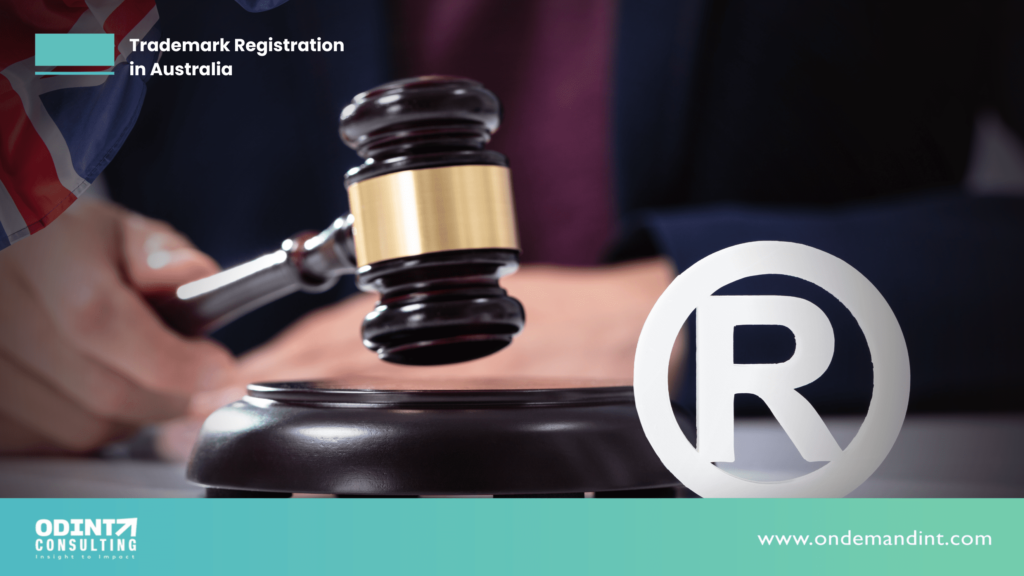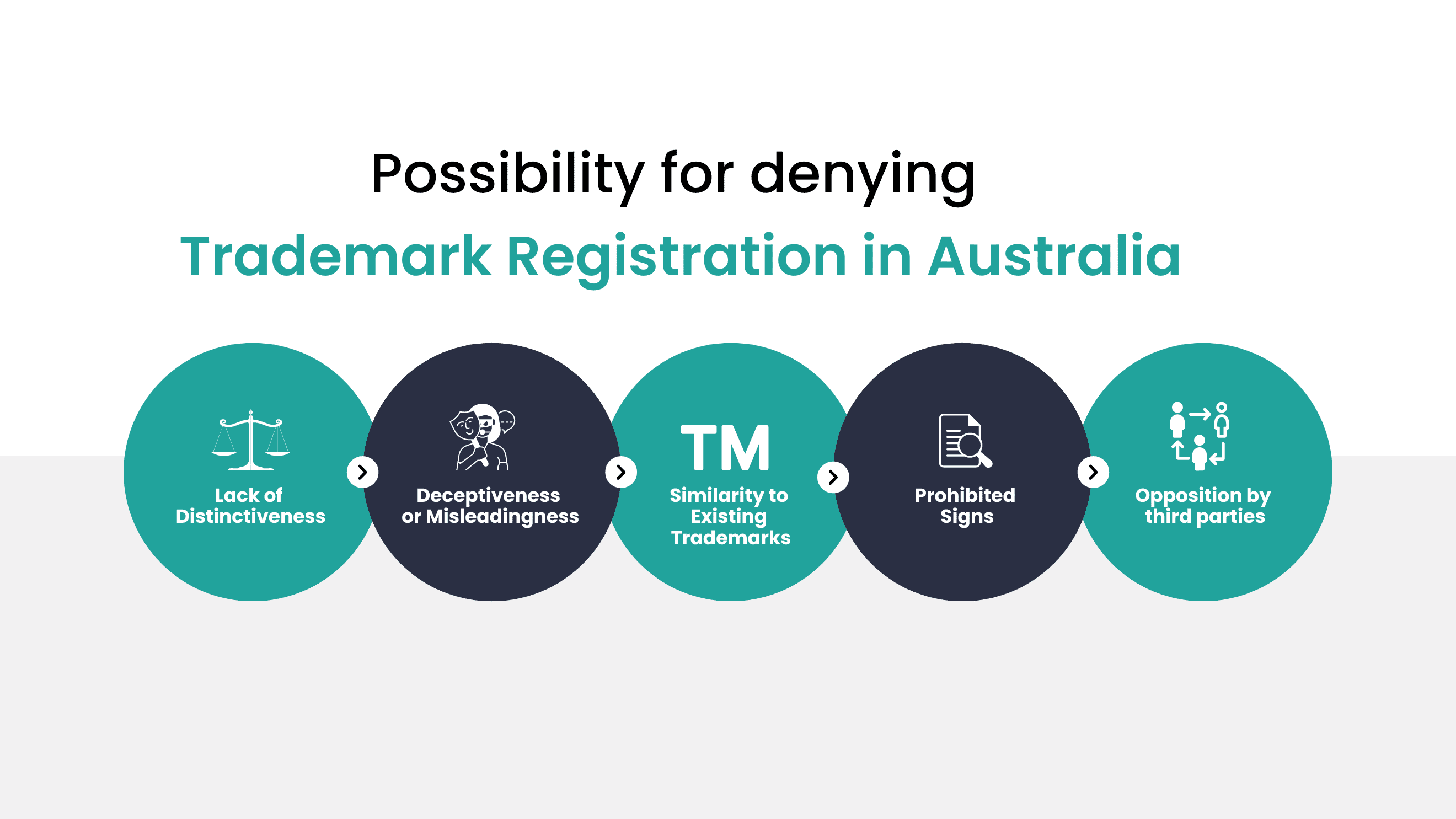Are you a sole proprietor or a businessman with big dreams of building a successful brand in Australia? Do you want to guard your brand’s originality and designate your complete ownership of it?
If so, then you need to know about trademark registration in Australia!
Trademark registration is a significant aspect of

guarding your brand’s originality and securing your intellectual possessions rights in Australia. If you have a business established in Australia, a registered trademark will give you entire rights to utilize your trademark name, symbol, or other distinctive marks in association with your goods or assistance, and provides legal protection against unauthorized use by others.
With a well-recognized and reputable trademark, you can establish brand recognition, build customer loyalty, and gain a competitive edge in the market. Registering a trademark involves a thorough and meticulous process that requires an understanding of the legal requirements, documentation, and procedures involved.
In this article, we will delve into the key aspects of trademark registration in Australia, including the benefits of registration, the step-by-step process, the documents required, and other essential information to help you navigate through the intricacies of trademark registration.
Need for Trademark Registration in Australia
Here are the key points explaining why trademark registration is important in Australia:
- Exclusive Rights: A registered trademark in Australia provides the owner with exclusive rights to use their brand identities, such as logos, names, slogans, or symbols, in the relevant industry or field, preventing others from using similar marks.
- Legal Recourse: Registering a trademark in Australia authorizes the owner to take legal action against any potential infringement, protecting their brand and seeking damages in case of unauthorized use by others.
- Brand Reputation: Trademark registration helps businesses establish and maintain their brand reputation, build customer loyalty, and gain a competitive advantage over competitors.
- Business Value: Registering a trademark in Australia is considered a valuable intangible asset that can be bought, sold, licensed, or used as collateral for loans, enhancing the overall value of the business.
- International Protection: Trademark registration in Australia can serve as a basis for seeking international trademark protection, enabling businesses to expand and protect their brand in overseas markets.
- Legal Benefits: Trademark registration is governed by the Trade Marks Act 1995 (Cth) and administered by IP Australia, providing statutory protection, legal presumption of ownership and validity, and public notice of ownership of the mark.
- Long-term Protection: Trademark registration provides long-term security for the brand, as trademarks can be revived indeed for the period of utilization.
Conditions for a trademark to be registrable
Your trademark needs to satisfy these two conditions in order to be registerable:
Not clashing with any already-existing trademarks
Your trademark should not be in clash with any already registered mark. You won’t be permitted to enroll your trademark that is identical or misleadingly similar to trademarks that already exist. if you have a mark that is similar to a previously existing mark then consumers may find it difficult to distinguish between the product. In order to ensure that your trademark is registrable, you should conduct a preliminary search.
Sufficiently different
Your trademark must be sufficiently different and not only a phrase that is typically used to describe the products or services, or a mark that other traders would typically need to employ in order to conduct business.
Process to Apply for Trademark Application for Australia
Here is a step-by-step process for a trademark application for Australia:
Step 1: Preliminary Search
While registering a trademark form, it is advised to do a thorough examination to guarantee that the desired trademark is not already registered or being used by others in Australia.
Step 2: Determine the Trademark Class(es)
Trademarks are registered under specific classes of products and assistance as per the Nice Classification system. Determine the appropriate classes that your trademark will fall under, as this will specify the scope of safety for your mark.
Step 3: Prepare the Trademark Application
Once the preliminary search is done, prepare the trademark application. The form could be enlisted online Via IP Australia’s eServices portal.
Step 4: Submit the Trademark Application
Submit the completed trademark application along with the applicable filing fee to IP Australia through the eServices portal. The filing fee depends on the number of classes and the filing option chosen (e.g., standard or fast track).
Step 5: Examination and Response to Examination Report
Later filing, the trademark form will undergo examination by an IP Australia analyst. In the absence of any problems, the trademark will be accepted for registration.
Step 6: Advertisement and Opposition Period
If the trademark form is obtained, it will be posted in the Australian Official Journal of Trademarks for a time frame of two months, during which third parties can oppose the registration of the trademark.
Step 7: Registration and Issuance of Trademark Certificate
In the absence of any competitors or if any opponents are settled in favor of the candidate, the brand will be enlisted, and a brand enrollment certificate will be granted.
After registration, it is important to monitor and enforce the trademark to prevent any potential infringement. This may include regular monitoring of the marketplace for unauthorized use of similar marks, taking legal action against infringers, and maintaining proper use of the trademark to ensure its ongoing validity.
Documents Mandated to Register a Trademark in Australia
When applying to register a trademark in Australia, you will generally need the subsequent papers:
- Trademark application form: The completed trademark application form, can be filed online through IP Australia’s eServices portal.
- Trademark specimen: A clear representation of the trademark in the shape of a sample.
- Goods/Services description: A clear and accurate definition of the product or service linked with the trademark, specifying the relevant class(es).
- Applicant’s details: Name, address, and contact information of the trademark owner or applicant.
- Power of Attorney (if applicable): If the trademark application is filed through a trademark attorney or agent, a power of attorney or authorization letter may be required to represent the applicant.
- Translation or Transliteration (if applicable): If the trademark includes non-English words or characters, a translation or transliteration of the mark into English may be required.
What are Australia's filing requirements for trademarks?
The trademark application has to be sent in English and must cover the following:
- The trademark’s representation
- Description of the commodity or service
- Any priority claims
- Proof that the application chares were made
- The details of the candidate
The priority Trademark application for Australia
Here are some additional points about the priority trademark application for Australia:
Paris Convention and Madrid Protocol
Australia is a member of both the Paris Convention for the Protection of Industrial Property and the Madrid Protocol, which are international treaties that provide a mechanism for claiming priority rights for trademarks.
This means that applicants who have filed a trademark application in a member country of either the Paris Convention or the Madrid Protocol can claim priority when filing their trademark application for Australia.
Priority Claim Deadline
To claim a priority application, the applicant must file their trademark application for Australia within six months from the filing date of the priority application. It’s important to meet this deadline to preserve the priority date, as late filings may result in a loss of priority rights.
Priority Date
The priority date is the submission date of the preference form, and it establishes the date from which the trademark rights are considered to have arisen. This can be beneficial as it can establish an earlier priority date in Australia, which may be crucial in case of potential conflicts with later-filed trademark applications.
Possibility for denying trademark registration in Australia

There are several grounds on which a trademark registration application in Australia may be refused by the Australian Trademarks Office.
These grounds include:
- Lack of Distinctiveness: A trademark should be specific and not simply defining or generic to be registered in Australia. If the proposed trademark is considered too common or lacks distinctiveness, it may be refused registration.
- Deceptiveness or Misleadingness: A trademark that is likely to deceive or mislead consumers about the personality, grade, or roots of the product or assistance may be refused registration.
- Similarity to existing trademarks: If the proposed trademark is too similar or identical to an existing registered trademark or a pending trademark application in Australia, it may be refused registration. This is to deter chaos between customers and potential conflicts between similar trademarks in the market.
- Prohibited signs: Trademarks that include prohibited signs, such as those that are offensive, obscene, or contrary to law, may be refused registration in Australia.
- Opposition by third parties: During the brand registration process, third groups may oppose the enrollment of a brand by pointing to a rival. If the resistance is victorious, the brand enrollment may be denied.
Conclusion
Trademark registration in Australia is a vital step for any brand owner looking to protect their brand, establish their market presence, and gain a competitive edge. It’s a strategic investment that can safeguard your intellectual property rights, secure your brand identity, and propel your business toward success.
Well, trademark registration may seem like a difficult procedure, but with the proper understanding and direction, it can be a smooth and beneficial journey. To make sure your trademark registration application meets all requirements for successful trademark registration in Australia and does not violate any third-party rights, you should consult with an expert from Odint Consultancy.
FAQ’s
Trademark registration in Australia provides you with exclusive rights to use your brand name, logo, or other distinctive marks, and legal protection against any unauthorized use by others.
The timeline for trademark registration in Australia varies, but on average, it takes about 7-8 months from the filing date to obtain the final registration.
If a trademark is similar or identical to an existing trademark in Australia, it may face opposition during the registration process.
Trademarks in Australia are registered based on the standard of products and services as per the Nice Classification system. You can register your trademark for certain classes associated with your business or good or service.
Trademark registration in Australia is acceptable for 10 years from the date of filing. It can be restored indefinitely for successive 10-year periods as long as the brand is in use and the renewal fees are paid on time.
While it is feasible to enroll a trademark on your own in Australia, it’s recommended to get formal help from a qualified trademark adviser or agent. They can assist you in navigating the complex procedure, conducting a comprehensive trademark examination, preparing a strong application, and responding to any office actions or oppositions that may ensue.
You must do a search of already-registered marks before submitting an application to register a trademark to see if:
- The trademark is sufficiently different to permit registration.
- The trademark clashes with any already existing marks, applications, or the same kinds of commodities and services just like yours.

